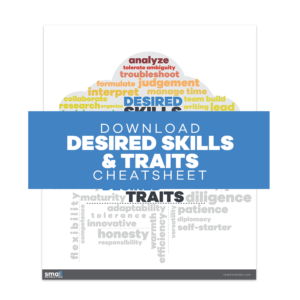With technological advancements, working from home has never been easier or more popular. You can earn good money online by freelancing, managing projects, organizing, teaching, etc., all from the comfort of your home.
Unfortunately, not everyone who works online knows how to do it effectively enough to make a living from it.
Without the right guidance, an airtight strategy, or the right frame of mind, you may find it difficult to consistently execute the type of excellent online work that generates repeat clients.
You could find yourself stuck, struggling to clarify a hazy idea, or unable to figure out how to solve a problem or execute a plan. Solving these types of issues is why using a mind map is so vital.
What Is a Mind Map Exactly?
A mind map is a visual representation of your ideas, using images, words, and colors. It is highly effective because its execution mimics the complicated way in which your brain works.
Merely writing down your thoughts so you can remember them is not always an effective way to track and boost your thought processes.
This is especially true if you are working on a complex project or co-creating with a team. You could end up with ideas that are too disconnected, unclear to anyone else, or too difficult to understand quickly.
With a mind map, you can take a step back and literally see the big picture, which is the best way for most people to learn and remember.
Even though creating a mind map might seem a bit complicated, its power comes from its simplicity.
Using this method to develop a conceptual map of all your thoughts will help you to analyze and understand your work better, and think up more ideas.
The technique can be used in project management, business planning, preparing presentations, planning how to execute a writing job, and even drafting the outline of that number one best-seller you haven’t written yet!
There are several challenges that mind mapping can help you to overcome. It can help with:
- Memorizing anything you need to remember
- Providing a clear overview of what’s most important
- Brainstorming effectively alone or as a group
- Better problem-solving and decision-making
- Streamlining and optimizing workflow
- Seamlessly merging researched information with your ideas
- Improving creativity and inspiring novel approaches and concepts
- Sharpening focus on immediate goals and long-term vision
How Do You Create a Mind Map?
You can use traditional methods of mind mapping, like using paper or drawing out your plans on a whiteboard.
However, in a world where most people prefer to work smart and work fast, you should consider going digital and achieving a more flexible process by using a mind mapping software/app.
Many types of mind mapping apps are available, and you can pick one that suits your budget, working style, and goals.
Mind mapping is a subjective process, and how you go about it will depend on your preferences, the available tools, and the type of project you need it for.
No matter what medium or style you choose to create a mind map, the technique’s design is rooted in the same principles.
There are three major steps to creating an effective mind map. Below, let’s summarize how to help you get started.
Step 1: Choose a Central Topic
First, prepare your ‘blank canvas’. This could be a large piece of paper, a whiteboard, or digital space. You should start by identifying the primary theme, task or idea you’re working on.
This central topic should be written or drawn in the center of the medium on which you have chosen to construct your mind map.
This space will form a central node and will be the core from which your mind map will expand outwards.
You should keep your topic label as concise as possible by using a word, a few words, or a picture. Whatever you choose should, however, be memorable.
Step 2: Branch Into Related Ideas
Do some brainstorming and then write down or draw any basic ideas or subtopics which are directly related to the main topic or task.
These subtopics should be in the space around the central node but are free to go anywhere on the page, with adequate spacing taken into account.
You should put down any related idea that comes to mind, although it is advisable to place less specific ideas farther away from the mind map’s core.
After these ideas are jotted down, consider how they relate to the central topic, and then connect each one to it with lines or arrows.
If you are using a digital device, you can drag and drop these elements and rearrange your ideas as you see fit.
For more traditional methods, some simple erasing will do the trick. To emphasize more important points or relevant ideas, you should use:
- Thicker lines
- Varying fonts
- Larger or upper case text
- Bigger drawings
This mirrors how your mind works and engages your brain more effectively. Using keywords or short phrases on the lines will explain the connections better, and ordered lists and numbers in linear hierarchies are also helpful.
Step 3: Sub-Branching
Finally, repeat the initial step you used to create the subtopics by generating more topics around them. Then connect these lower-level subtopics to any corresponding subtopic.
For the best mind mapping, you should aim to be as visual as possible by generously using colors, drawings, graphics, or symbols to differentiate thoughts and ideas.
With mind map apps, you can use formatting tools to add icons, change themes, and brighten up your creation.
This is vital because your brain has been optimized for visual experiences, and you process imagery 60,000 times faster than text.
However, to avoid going overboard and wasting time, you should exercise some restraint and prune your mind map as necessary.
Regular use of a mind map will make you more creative and productive.
Laying out your thoughts in this manner will enable you to take on any online job because it increases your clarity, boosts your understanding of what you need to do, and improves your performance every time.
And just in case you are still unconvinced of the technique’s efficacy, we have the stats to prove it. Results from a survey showed that mind mapping could enhance your creativity by 30% and increase your pace of work by 44%!
So what are you waiting for? With such far-reaching benefits, it is safe to say that mind mapping may be the solution to your problems with working productively online.
Maximize Your Benefits
Using a mind map is a fascinating and exciting process. In this digital era, where everything is fast-paced and ideas cannot afford to be static, it is necessary to upgrade how you think. So, the time to give mind mapping a try is now!
Are you a freelancer? Do you want to jump-start your online career? Do you want to build enough skills to work from home and make good money while you’re at it?
Then you should join our community at Small Revolution for more ideas on how to work effectively online.
Check us out today to learn how you can make some money doing what you love online, on your own terms, and in your own space!


